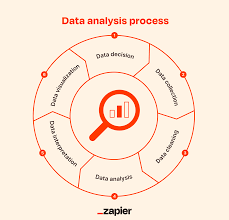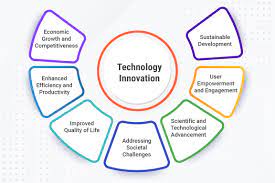The Importance of Data Analysis in Research
Data analysis plays a crucial role in research across various disciplines, providing valuable insights and supporting informed decision-making. Whether in scientific studies, market research, social sciences, or healthcare, the process of analysing data helps researchers uncover patterns, trends, and relationships that can lead to significant discoveries and advancements.
Key Steps in Data Analysis
Effective data analysis involves several key steps to ensure accuracy and reliability of results. These steps typically include:
- Data Collection: Gathering relevant data through surveys, experiments, observations, or other methods.
- Data Cleaning: Removing errors, inconsistencies, and outliers from the dataset to enhance its quality.
- Data Exploration: Examining the data using descriptive statistics and visualisation techniques to identify patterns and trends.
- Hypothesis Testing: Formulating hypotheses based on the data and using statistical tests to determine their significance.
- Interpretation: Drawing meaningful conclusions from the analysis results and translating them into actionable insights.
The Role of Technology in Data Analysis
Advancements in technology have revolutionised the field of data analysis, enabling researchers to process large datasets efficiently and extract valuable information quickly. Tools such as statistical software, data visualisation platforms, and machine learning algorithms have made complex analyses more accessible and streamlined the research process.
Benefits of Data Analysis in Research
The benefits of thorough data analysis in research are manifold. By uncovering hidden patterns and correlations within datasets, researchers can make evidence-based decisions, validate hypotheses, predict future trends, and support their findings with empirical evidence. Data analysis also helps identify potential areas for further investigation and informs policy-making processes across various sectors.
Conclusion
In conclusion, data analysis is an essential component of research that drives innovation, fosters discovery, and enhances decision-making processes. By leveraging advanced analytical techniques and tools, researchers can unlock the full potential of their data assets and contribute meaningfully to their respective fields. Embracing data analysis as a cornerstone of research practices empowers researchers to make informed choices that shape our understanding of the world around us.
Five Essential Tips for Effective Data Analysis in Research
- Ensure data quality by cleaning and validating the dataset.
- Use appropriate statistical methods to analyse the data.
- Visualise the data using graphs and charts for better understanding.
- Interpret the results accurately and draw meaningful conclusions.
- Document your data analysis process thoroughly for reproducibility.
Ensure data quality by cleaning and validating the dataset.
To ensure the integrity and reliability of research findings, it is essential to prioritise data quality through thorough cleaning and validation of the dataset. By meticulously removing errors, inconsistencies, and outliers, researchers can enhance the accuracy of their analysis and prevent misleading conclusions. Validating the dataset further ensures that the data is consistent, complete, and reliable for meaningful interpretation. Investing time and effort in cleaning and validating the dataset not only improves the overall quality of research outcomes but also instils confidence in the validity of results.
Use appropriate statistical methods to analyse the data.
In research, it is essential to use appropriate statistical methods to analyse the data effectively. By selecting the right statistical techniques based on the nature of the data and research questions, researchers can ensure the accuracy and reliability of their findings. Using inappropriate methods may lead to misleading results or incorrect conclusions. Therefore, employing suitable statistical tools and methodologies is crucial in extracting meaningful insights from data and making informed decisions based on sound analysis principles.
Visualise the data using graphs and charts for better understanding.
Visualising data through graphs and charts is a valuable tip in research data analysis. By presenting information visually, researchers can effectively communicate complex data patterns and relationships in a clear and concise manner. Visual representations not only enhance the understanding of the data but also facilitate comparisons, trends identification, and insights extraction. Graphs and charts serve as powerful tools that enable researchers to interpret data more efficiently, make informed decisions, and convey findings to a wider audience with greater impact.
Interpret the results accurately and draw meaningful conclusions.
Interpreting the results of data analysis accurately and drawing meaningful conclusions is essential in research. By carefully analysing the data and understanding the implications of the findings, researchers can extract valuable insights that contribute to the body of knowledge in their field. It is crucial to consider the context of the study, potential limitations, and alternative explanations when interpreting results to ensure that conclusions are valid and reliable. Drawing meaningful conclusions not only validates the research but also guides future investigations and decision-making processes based on evidence-backed insights.
Document your data analysis process thoroughly for reproducibility.
Ensuring the reproducibility of data analysis in research is paramount to maintaining transparency and reliability. By meticulously documenting the data analysis process, researchers not only provide a clear roadmap for others to follow but also enable the replication of results for validation and verification purposes. Comprehensive documentation, including details on data sources, cleaning procedures, analysis methods, and software tools used, enhances the credibility of research findings and fosters a culture of openness and accountability in the scientific community. Ultimately, thorough documentation of the data analysis process serves as a foundation for building trust in research outcomes and advancing knowledge in a rigorous and systematic manner.





